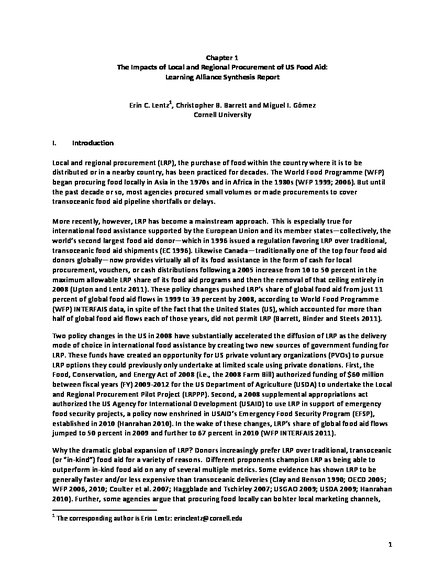
Local and regional procurement (LRP), the purchase of food within the country where it is to be distributed or in a nearby country, has been practiced for decades. The World Food Programme (WFP) began procuring food locally in Asia in the 1970s and in Africa in the 1980s (WFP 1999; 2006). But until the past decade or so, most agencies procured small volumes or made procurements to cover transoceanic food aid pipeline shortfalls or delays.
In this synthesis report, we summarize the findings of a set of studies completed for a consortium of four NGOs—the “LRP Learning Alliance” (Catholic Relief Services, Land O’Lakes, Mercy Corps and World Vision)—to evaluate the impacts of LRP activities undertaken in fiscal year (FY) 2011 under LRPPP or EFSP. After describing the Learning Alliance and the data in the next section, we highlight the varied impacts of LRP along multiple dimensions: timeliness, cost‐effectiveness, local market price and price volatility, recipient satisfaction, quality and safety, and impact on smallholder suppliers. The evidence strongly supports policymakers’ wisdom in including LRP within the international food assistance toolkit. On balance and across most indicators, LRP under these new US programs has been extremely effective. But its impacts vary in intuitive ways and tradeoffs commonly arise among potentially competing objectives. LRP is an important new weapon in the fight against global food insecurity; but it is no magic bullet. As US PVOs grow more comfortable with LRP and the Congress considers making it a permanent, expanded part of the US international food assistance toolkit, it is important to take a clear‐eyed, evidence‐based look at LRP’s performance in multiple, sometimes competing dimensions